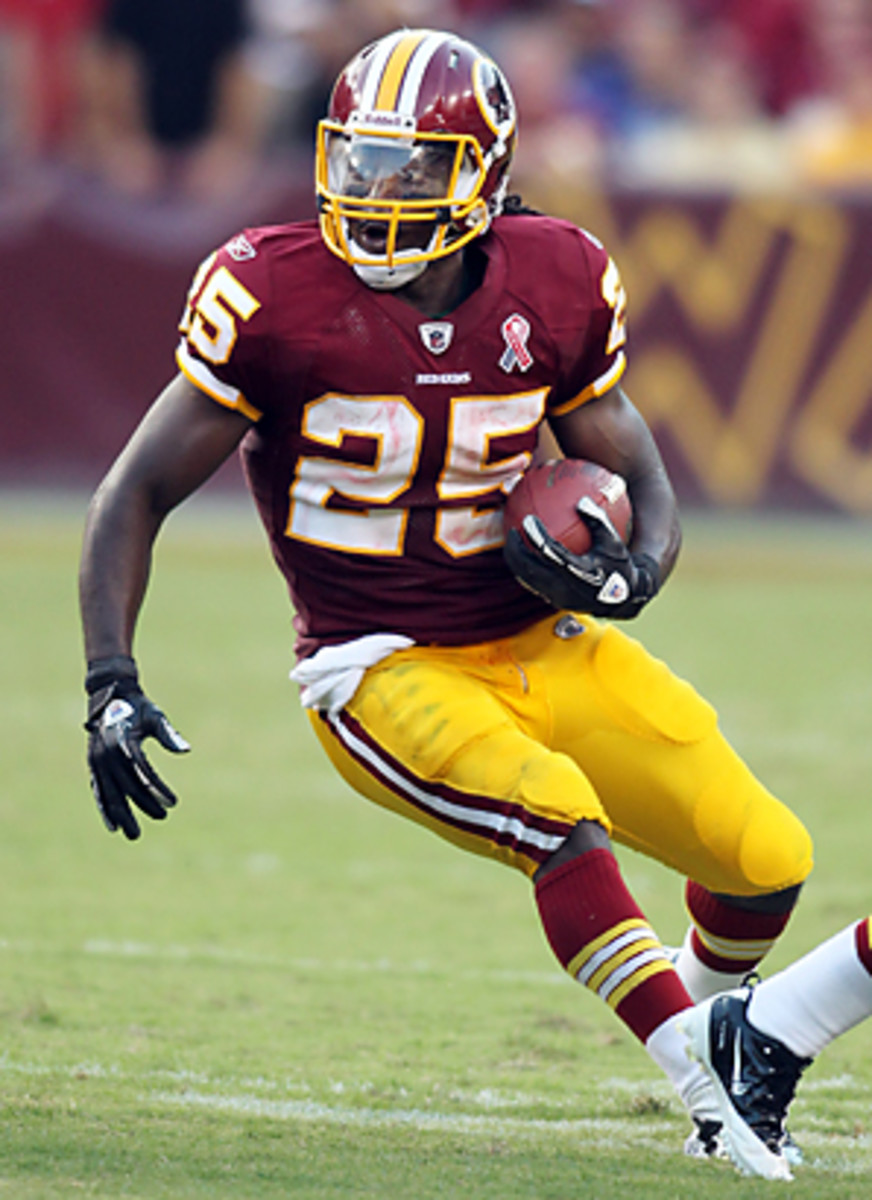Running back duties not as diffuse in Week 1 as feared in fantasy
The fear of multiple back systems that gripped many a fantasy draft may have been overplayed. In Week 1, 12 running backs, representing more than one-third of the teams in the league, handled more than 65 percent of their team's total carries (Tim Hightower accounted for 96.1 percent of Washington's carries). And for 24 of 32 teams, one back handled at least 55 percent of his team's workload. Hardly evidence of a shift toward two- and three-back systems.
Still, there were examples where the breakdown was not so lopsided.
• Take New England. A year ago, Danny Woodhead received half as many carries as BenJarvus Green-Ellis, but owned a better average yards per carry (5.6 to 4.4). Even so, most fantasy owners didn't think much of Woodhead this summer. On Monday, the Patriots gave him the football twice as much as Green-Ellis (14 to 7), even though both averaged 4.9 yards a carry. What's more, Woodhead got the call on the only two third down plays in which the Patriots chose to run the ball. A change on the depth chart? Probably not; just Bill Belichick being Bill Belichick. If Monday was any indication, how New England splits its carries will change week to week, depending on the opponent and game situation.
• The Packers coaching staff has been transparent with regard to how it planned to handle its rushing attack. The team said Ryan Grant and James Starks would split carries, with Grant getting to claim the role of starter. That held true last Thursday, although Starks was noticeably more effective on his 12 carries as compared to Grant's nine. Fantasy owners should expect the Packers to continue to ride both backs.
• Baltimore's Ray Rice -- one of the top fantasy performers of the weekend -- is one of only seven backs to have carried 300 or more times last year. But as well as he played against the Steelers, there's reason to doubt Rice will duplicate the feat. It's true that seven of Ricky Williams' 12 carries came in the fourth quarter, with the Ravens leading 32-7 -- garbage time. But Williams picked up 26 yards on one third quarter carry, and he averaged 5.3 yards per carry for the game (not far off Rice's 5.6-yard average). Williams' performance showed he can still be effective at age 34, and it may have given the coaching staff confidence that it can lessen the load on Rice a tad.
• Mike Tolbert and Ryan Mathews rotated series in the Chargers win over Minnesota, with both players seeing 12 carries. Mathews' 3.8-yard average was better than Tolbert's 2.9, though neither player made a convincing argument for being the team's go-to rusher. Tolbert scored twice (one rushing, one receiving) but gained three or fewer yards 75 percent of the time he carried the ball. Mathews' ineffectiveness on first down, especially early in the game, forced San Diego to face long yardage situations on second and third down.
In Week 1 of the 2010 season a total of nine NFL running backs racked up 20 or more carries. Many would have expected to see that number drop this season, but it didn't by much. Eight backs reached the mark in this year's opening weekend: Cedric Benson and Hightower (25), Maurice Jones-Drew and Ben Tate (24), Frank Gore and Darren McFadden (22), Jahvid Best (21) and Fred Jackson (20). Of interest, only one player reached the mark in both seasons -- Jones-Drew.
Oakland's Darren McFadden was the only NFL back to log more than one 20-yard carry this week. With three on Monday against the Broncos (47, 20, 20), the fourth-year back is well on his way to bettering his 2010 league-leading total of 14.
The Falcons gained 110 yards rushing on just 14 carries in a losing effort on Sunday. Michael Turner now leads all players with a 10 yards-per- carry average. This week, Atlanta hosts a Philadelphia run defense that allowed St. Louis' running backs 169 yards on 25 attempts.






































